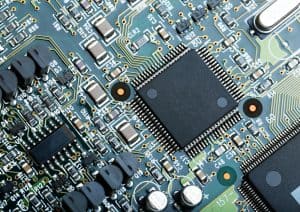Printed circuit boards (PCBs) are the foundation of all modern electronic devices.
The choice of material affects performance, durability, and cost.
From consumer electronics to aerospace systems, selecting the right PCB material ensures reliability and efficiency.
This guide explains different PCB materials, their characteristics, and how to choose the best option for your design needs.
What Are PCB Materials?
PCB materials form the structural and electrical base of the circuit board.
They include a substrate (core), copper layers, and a dielectric layer.
The substrate provides mechanical support, while the dielectric ensures electrical insulation between copper traces.

Commonly, PCB materials are chosen based on their electrical performance, thermal stability, and cost efficiency.
Engineers consider parameters such as dielectric constant, loss tangent, and temperature resistance before finalizing the material.
Choosing the right one impacts signal integrity, thermal management, and manufacturability.
Common Types of PCB Materials
FR4 PCB Material
FR4 is the most widely used PCB substrate made of woven fiberglass and epoxy resin.
It offers a balance of mechanical strength, flame resistance, and cost-effectiveness.
Ideal for consumer electronics, industrial devices, and automotive systems.
FR4 typically has a dielectric constant of 4.5 and can operate in moderate temperature conditions.
However, for high-frequency or high-heat applications, FR4 may not provide adequate performance.
Rogers PCB Material
Rogers laminates are engineered for high-frequency and microwave applications.
They offer low dielectric loss and stable electrical properties across temperature ranges.
Common models include Rogers 4350B and 5880, used in antennas, RF modules, and aerospace electronics.
Although Rogers materials are more expensive than FR4, they ensure superior signal integrity and minimal energy loss at high frequencies.
Ceramic PCB Material
Ceramic materials, such as aluminum oxide and aluminum nitride, deliver excellent heat dissipation and stability.
They are used in high-power LEDs, sensors, and military electronics.
Their thermal conductivity is far greater than FR4, making them ideal for extreme environments.
While ceramic PCBs provide outstanding performance, they are costlier and more fragile during manufacturing.
Flexible PCB Materials
Flexible PCBs use polyimide or polyester as the base material.
They allow circuits to bend and fold without breaking, enabling compact and dynamic designs.
Used in smartphones, wearables, and medical devices.
Their lightweight and high-temperature tolerance make them versatile, though they require precise fabrication techniques.
Metal Core PCB Material
Metal core PCBs use aluminum or copper as the base layer.
These materials provide excellent thermal management for high-power devices such as LED lighting and motor controllers.
The metal core helps spread heat evenly, preventing component damage.
They are cost-effective for thermal applications but less flexible than traditional PCB types.
Key Properties to Consider When Choosing PCB Materials
Thermal Conductivity
Efficient heat dissipation is essential for device longevity.
Materials like metal core and ceramic PCBs offer higher thermal conductivity compared to FR4, reducing overheating risks.
Dielectric Constant (Dk)
A lower dielectric constant ensures faster signal transmission and reduced loss.
For high-speed or RF applications, materials with stable Dk values, such as Rogers, are preferred.
Mechanical Strength
The substrate must withstand physical stress during assembly and operation.
FR4 and metal core materials provide excellent durability, while flexible substrates balance strength with adaptability.
How to Select the Right PCB Material for Your Project
Choosing the right material depends on performance needs, budget, and environmental conditions.
For cost-sensitive consumer products, FR4 is usually sufficient.
For high-frequency circuits or harsh environments, materials like Rogers or ceramic are better suited.
Consider signal speed, operating temperature, mechanical stress, and production cost.
Collaborate with your PCB manufacturer to verify compatibility with your design and manufacturing processes.
Final Thoughts
Selecting the appropriate PCB material ensures your electronic design performs reliably and efficiently.
Each material—whether FR4, Rogers, ceramic, flexible, or metal core—offers unique advantages.
Understanding their properties and applications helps engineers achieve optimal performance and product longevity.











